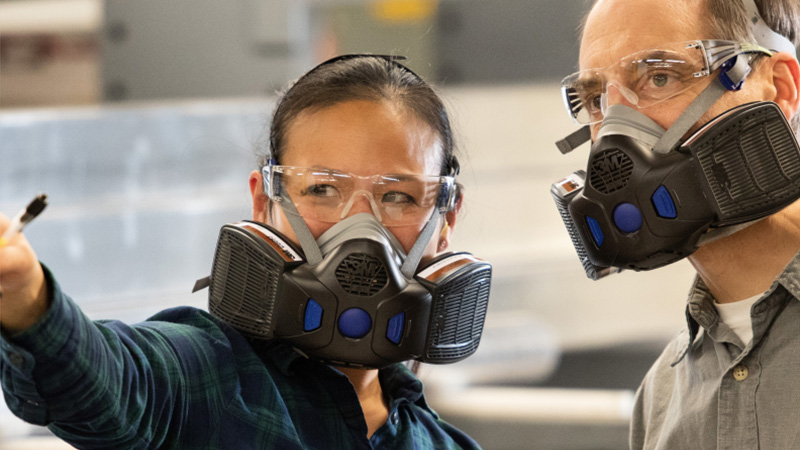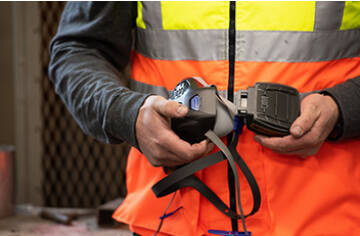
Respiratory filters do not last forever. Once the full capacity of a gas and vapour filter has been used, it no longer provides any protection. A saturated particulate filter will still protect you, but is harder to breathe through, resulting in fatigue and reduced productivity.
Do you change your filters often enough? Find out more here.
What types of filters are there?
- Particle filters provide protection against particles including dust, mist, welding fumes and bacteria or viruses. They offer no protection against gas and vapours. Different levels of protection are available, with different levels of filtering efficiency.
- Gas and vapour filters provide protection against gases and against the gas produced when a solid or liquid substance evaporates at room temperature. They offer no protection against particles, such as dust or welding fumes. There are different types of gas and vapour filters for different types of gases and vapours.
- Combination filters as the name suggests offer protection against particles, gases and vapours. Different combinations are used depending on the airborne hazards.
How exactly do these filters work?
Different types of filters use different technologies to filter pollutants from the air. Therefore, it is important to select the right filter and use it properly.
Particle filters consist of a bed of randomly oriented, electrostatically charged fibres.
The fibres attract and retain the dangerous particles as soon as they enter the filter material.
The efficiency and protection level of a particulate filter are enhanced by increasing the thickness of the filter material and, in turn, improving its capture effectiveness.
In the case of positive-pressure breathing masks, such as reusable masks, where the wearer has to use the power of their lungs to suck air through the filters, greater filter thickness can increase breathing resistance and make the mask uncomfortable to wear.
In the case of motor-driven breathing systems, a greater filter thickness can consume more battery power, so in both cases it is important to strike the right balance.
Gas and vapour filters are made of activated carbon. When gases or vapours are drawn into the filter, they are absorbed into the activated carbon at the molecular level. This reaction continues until the carbon is completely saturated - at this point, the filter has reached the end of its life and must be replaced.
Therefore, it is very important to establish a proper filter replacement schedule when using respiratory filters.
When should you change your filters?
Respiratory filters do not last forever.
Once the full capacity of a gas and vapour filter has been used, it no longer provides any protection.
A saturated particulate filter will still protect you, but is harder to breathe through, resulting in fatigue and reduced productivity.
The lifespan of this type of filter can be influenced by a number of factors, including:
- The type of filter
- The concentration of contamination in the air
- The speed of respiration
- The moisture level
- The temperature
A schedule for changing your filters
You are advised to draw up a schedule for replacing filters, with a specific period after which the filters must be replaced.
This schedule can be developed based on common saturation times at your workplace, combined with a safety margin.
Alternatively, a filter replacement schedule could be developed based on common breakthrough times for gas and vapour filters, and then applying a safety margin.
However, this method is less accurate because it depends on human senses, which are subjective and variable.
Some basic guidelines
A particulate filter should be replaced if it becomes difficult to breathe through.
A gas and vapour filter should be changed when you can taste or smell the contamination when wearing the mask correctly.
This period is best determined using objective data and service life estimation tools such as the 3M Service Life software.
A combination filter must be replaced as soon as one of its components (gas and vapour or particles) is saturated
At the very least, filters should be replaced when:
- The shelf life of the filter has expired
- The filter has been out of packaging for 6 months or more (gas and vapour or combination filters)
- The filter shows signs of damage
Are you changing your filters often enough?




